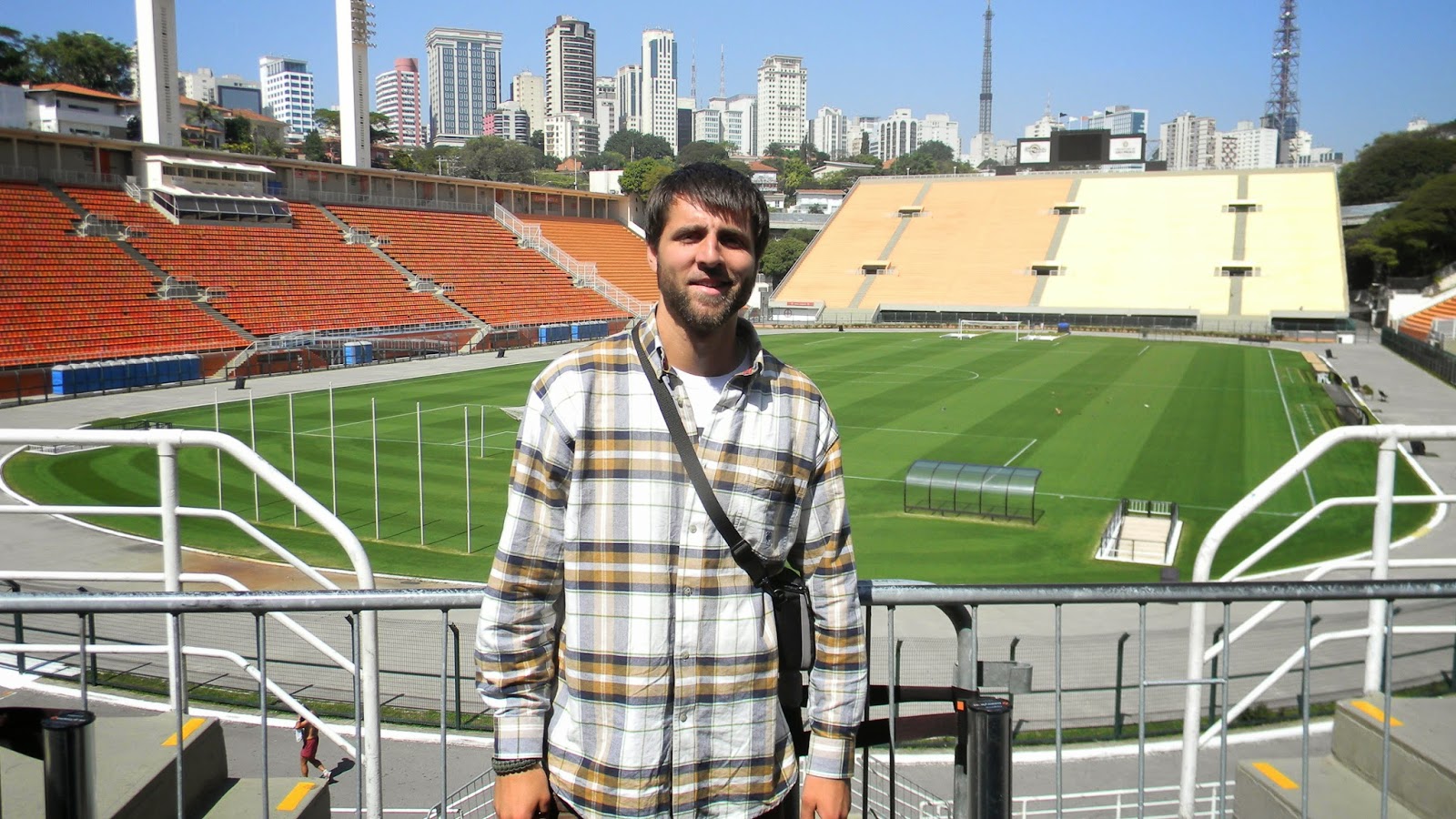I would call Chimarrão (pronounced
She-Ma-How for the English speakers reading this) a ritualistic social drink. It
is a loose-leaf tea made from ervamate, and is prepared in a special way. Chimarrão
is a tradition of the Gauchos (Ga-Oo-Show) here in Rio Grande do Sul, Brasil.
It is also found in Paraguay, Uruguay, southern Argentina, and other Brasilian
states, but with less popularity. The
cup in which Chimarrão is prepared is called a Cuia (coo-ya). It is
traditionally made out of the narrowing part of a gourd.
The straw that has
essentially a mini-colander on one end is called a bomba. The higher quality bombas are made of
stainless steel.
The Ritual: Hot water is put into a 1-liter thermos; the
water is best just short of boiling. The Erva is then prepared in the Cuia
normally by the owner of the house, or the most experienced participant, or by
who ever the owner asks to do it. The person who prepares the Chimarrão takes
the 1st turn and drinks all of the water from the Cuia. When the
Cuia is empty the drinker often makes a slurping noise. The Cuia is then
refilled with water by the preparer and passed to the next person in line. If
you are sitting in a circle it usually rotates around the circle, regardless of
the formation the order is always maintained. If someone joins the group they
are usually offered the next turn and thus are in that spot of the order. Below
is a list of the 10 commandments of Chimarrão that I have translated to English
for you all. The 6th
commandment is VERY important because if the bomba is move it will most likely
cause it to clog.
The 10 commandments of Chimarrão:
1.
Thou shall not put sugar in the Mate
2.
Thou shall not say Chimarrão is unsanitary
3.
Thou shall not say the Mate is too hot
4.
Thou shall not leave the Cuia half-full
5.
Thou shall not be ashamed of “slurping” as you
finish
6.
Thou shall not move the Bomba
7.
Thou shall not alter the serving order
8.
Thou shall not fall asleep with the Cuia in hand
9.
Thou shall not condemn the owner of the house
for taking the 1st turn
10. Thou
shall not say Chimarrão causes throat cancer
If you have had enough, then when you have finished your
turn, as you hand the Cuia back to the person serving the Chimarrão you say “obrigado”.
This means “Thank You”, but in context it is a signal for I don’t want any
more. If the water runs out and
some people still want more Chimarrão you simply refill the thermos with more
hot water.
Chimarrão is very social, and a huge part of the culture in
Rio Grande do sul.













